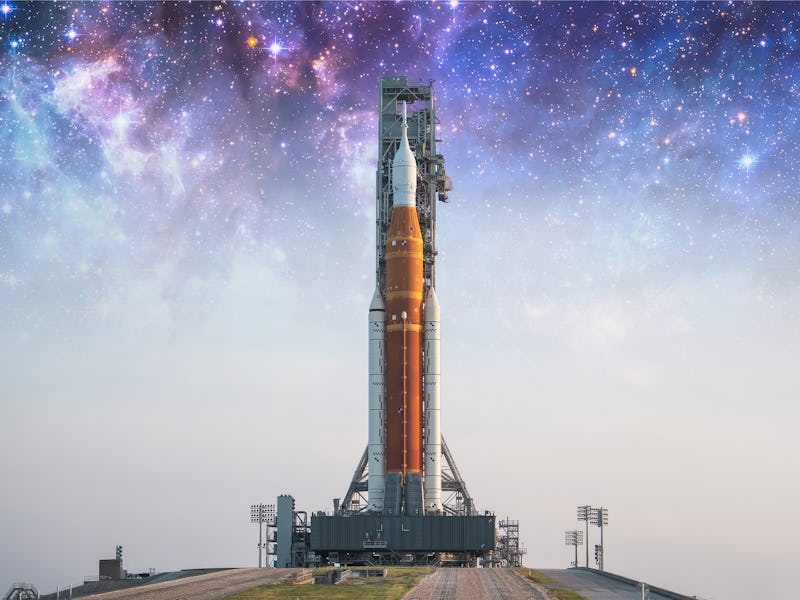NASA successfully launches Artemis I toward the Moon
NASA's Moon rocket has finally launched on a 25-day journey farther than Apollo ever went.

Liftoff! NASA’s Artemis I mission is finally underway to the Moon. There were 500 seconds between the ground and glory. On early Wednesday morning at 1:47 a.m. Eastern, Artemis I ignited its engines, initiating 8.8 million pounds of thrust in a little more than eight minutes.
The first phase of this human-grade Moonshot harnesses the momentum of the Space Launch System’s novel launch technology and the Sun’s energy upon four unfurled Orion capsule solar arrays to fly on an epic lunar journey not seen since the Apollo era.
Beginning this 26-day voyage was a challenge. Up until Artemis I’s four RS-25 engines and rocket-booster pair lit up the dark sky over NASA’s Kennedy Space Center in Cape Canaveral, Florida, Artemis I had towered taller than the Statue of Liberty for eight months at the historic facility.
The long wait included numerous delays attributed to liquid propellant leaks, minor hardware replacement, and Hurricane Ian. In the days before launch, the rocket’s mission management team agonized over whether delaminated caulk from winds of Hurricane Nicole made flying too dangerous.
Even the night and early morning of the mission saw multiple issues, with an ethernet switch delaying the launch up until about 1:38 a.m. Eastern, when the T-minus 10 countdown finally began, with a declared launch time of 01:47:44 a.m. NASA was able to hit that goal and finally launch Artemis I on a course to fly farther than any spacecraft built for humans has ever ventured.
A few minutes after launch, the solid rocket boosters on the side jettisoned, while the core engine stage cutoff occurred at 1:56 a.m. Eastern, at which point the craft entered orbit.
Once a team in Houston performs one final review, Artemis I then enters an 18-minute trans-lunar injection (TLI) burn, and begin its 280,000-mile journey away from our planet.
Today marks the first leg in its journey of 1.3 million miles.
What is Artemis I’s mission?
Artemis I demonstrates NASA’s new deep space exploration system. Its two main components — the Space Launch System (SLS) and the Orion capsule — have undergone testing separately. Artemis I is the first integrated flight test of these two. It will evaluate the SLS’ heavy lift capabilities and dispatch the crew-capable Orion thousands of miles beyond the Moon.
NASA heritage rocket-makers have been making space vehicles for more than half a century. The Orion program has existed since 2006, and SLS since 2011 (though it had several predecessors). NASA had been developing these ideas over the last two decades, and then in 2019, Vice President Mike Pence announced the rework of these projects into the Artemis Program. This put the rocketry on a schedule, with a goal to return humans to the Moon by 2024. The first chapter of the program, Artemis I, has already accumulated a price tag of roughly $50 billion.
Artemis I is currently set as a short-class mission lasting just 25 days, 11 hours, and 36 minutes. Splashdown in the Pacific Ocean is scheduled for Sunday, December 11.
The launch of the Artemis I ship.
What happens after Artemis I launches?
The rocket will swing once around Earth, reaching a speed of almost 20,000 miles per hour, and then head towards the Moon.
On the first day, NASA will conduct a test of Artemis I’s guidance and navigation control system. The team will also perform the first of several trajectory correction burns. There are a total of four burns on the way to the Moon, which set Artemis I on a path to taking one of the most important maneuvers of the entire mission: the Outbound Powered Flyby (OPF) on the mission’s sixth day, Monday, November 21.
The OPF will bring Orion to 60-80 miles above the lunar surface, and send the future four-astronaut vehicle farther than any human-designed spacecraft has gone before. This lunar pirouette is called the Distant Retrograde Orbit (DRO).
Artemis will also release 10 cubesats. These tiny satellites will gather information about the cislunar environment, which could inform how NASA conducts and designs future human space travel.
After collecting data across its Manikin and taking a modern version of the classic Apollo image Earthrise, Artemis I will head back to Earth and maneuver into a prime reentry approach. As it careens through Earth’s atmosphere from a great distance and benchmark speed, Orion will likely register a temperature of 5,000 degrees Fahrenheit. That’s 73 percent hotter than compared to a spacecraft returning from low-Earth orbit, such as a capsule departing the International Space Station.
NASA hopes Orion’s thermal protection system will safely keep against the novel feat. If all goes well, Orion will successfully splashdown on Sunday, December 11, in the Pacific Ocean.